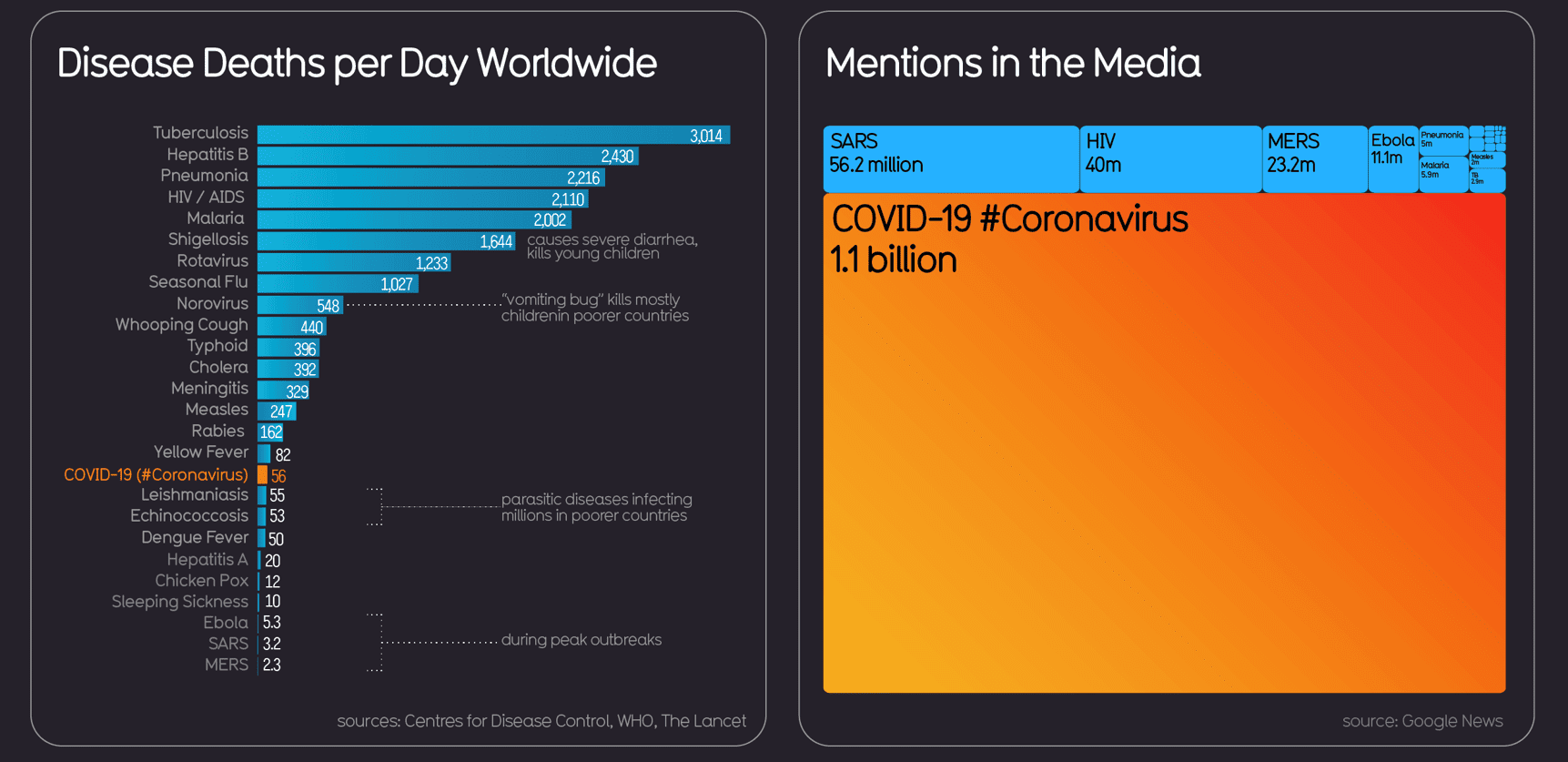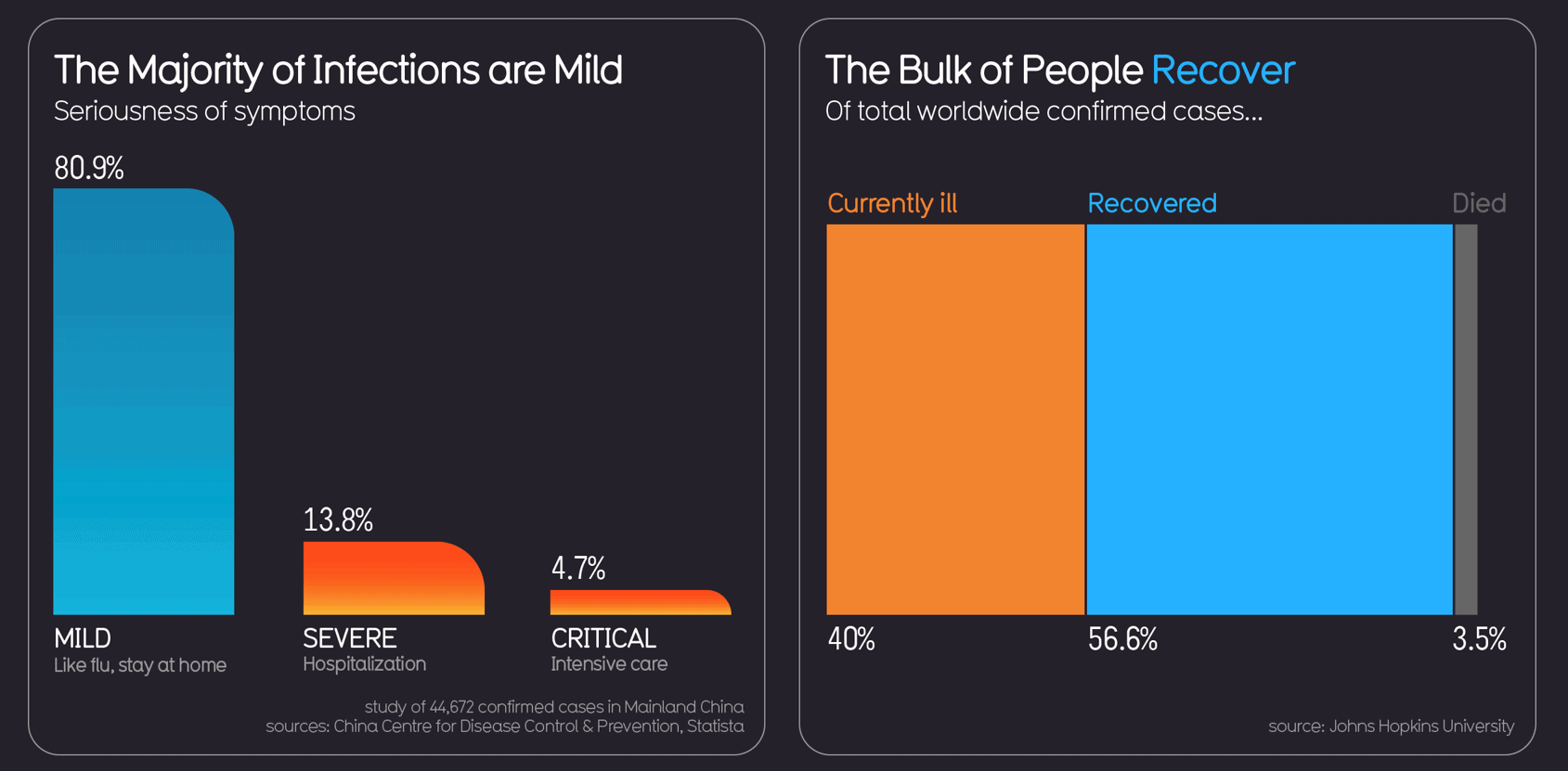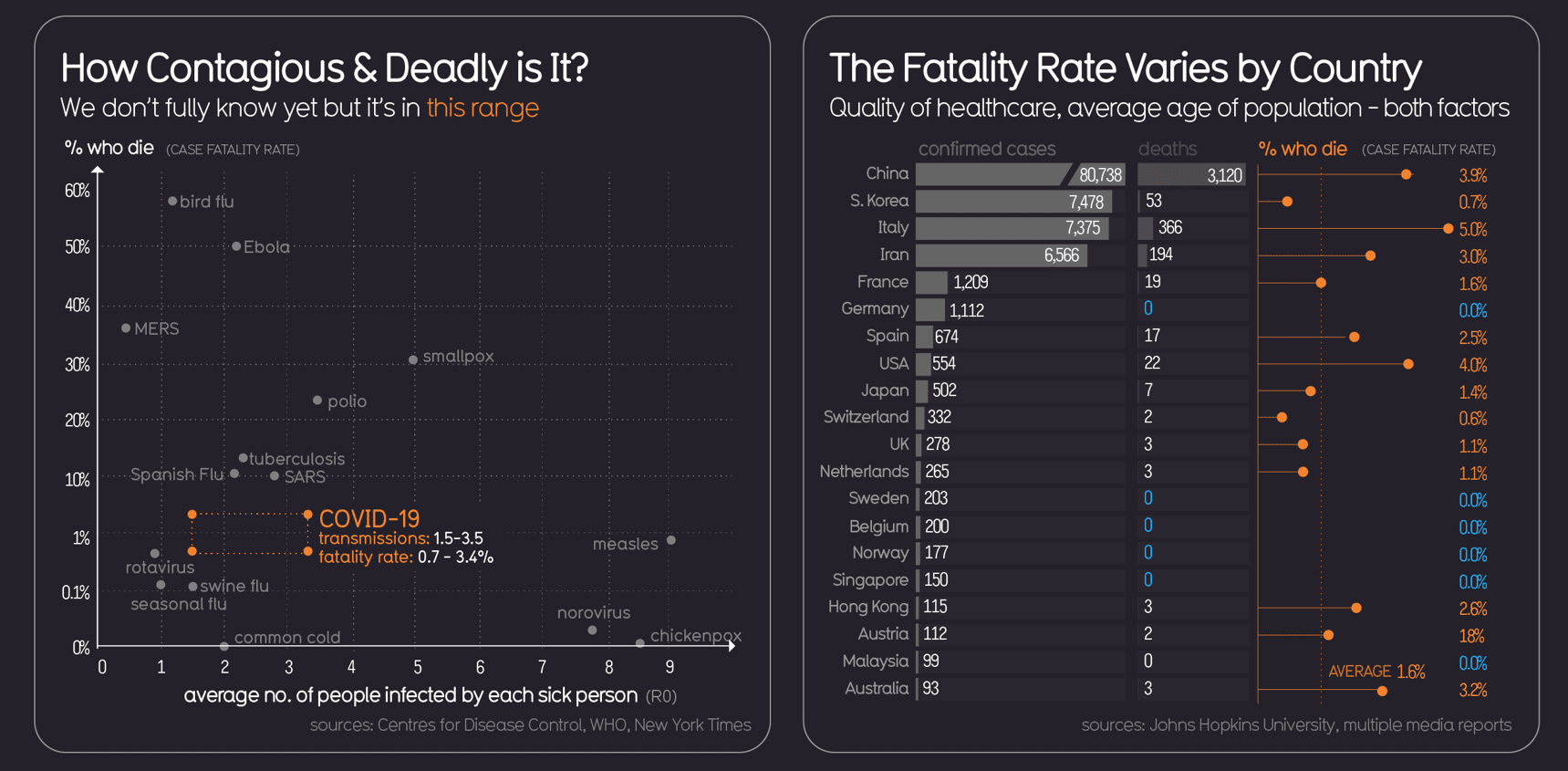 With the current reaction to the Coronavirus epidemic in the US, you might be surprised to know that the CDC’s current goal of mitigation involves slowing down the spread of infection so that the epidemic lasts longer. That’s right, the CDC actually wants to spread out, the spread of this disease. Though on the surface this may seem counterintuitive, as you would think they would want this outbreak over and to return to normal as soon as possible, there are significant business continuity benefits to a slower infection rate.
With the current reaction to the Coronavirus epidemic in the US, you might be surprised to know that the CDC’s current goal of mitigation involves slowing down the spread of infection so that the epidemic lasts longer. That’s right, the CDC actually wants to spread out, the spread of this disease. Though on the surface this may seem counterintuitive, as you would think they would want this outbreak over and to return to normal as soon as possible, there are significant business continuity benefits to a slower infection rate.
Unlike other natural disasters where the impact is to the physical infrastructure of a business, with disease outbreaks the impact is to human capital. In this case, the ultimate threat to business operations are human resources and their inability to work. When a disease outbreak moves very quickly through a region with a rapid rate of infection, the burden to society as a whole and specifically healthcare and business operations can be overwhelming. A slower infection rate with the epidemic spread out over a longer period of time allows medical facilities to care for patients and businesses to better handle the impact and absorb the employee absences more easily.
Although the current reaction to the COVID-19 epidemic may seem unprecedented, it’s important to keep in mind that the Coronaviruses are not new. First discovered in mid-1960s, there are now 7 types of Coronaviruses that can infect humans.1 They range in seriousness from common cold viruses to SARS and MERS. The CDC estimates that COVID-19 falls somewhere between these two extremes in seriousness.2 The bottom line is this is not our first epidemic, and it won’t be our last.


 No-one knows yet what will happen with this new virus and if the current hysteria is warranted. After all only 10 weeks ago, we hadn’t even heard of this virus. In fact, it was first reported in the press in early January 2020 as unidentified viral pneumonia.3 But according to Dr. Jay C. Butler, Deputy Director for Infectious Diseases for the CDC, (our team member attended the webinar yesterday along with 40,000+ other people) what we can count on is that it will be at least two months before a vaccine will be ready to enter human trials and at least 12 to 18 months after that before a vaccine for the general population will be approved.2 With that timeframe, it is probable that this virus will spread through a much larger population before a vaccine is available.
No-one knows yet what will happen with this new virus and if the current hysteria is warranted. After all only 10 weeks ago, we hadn’t even heard of this virus. In fact, it was first reported in the press in early January 2020 as unidentified viral pneumonia.3 But according to Dr. Jay C. Butler, Deputy Director for Infectious Diseases for the CDC, (our team member attended the webinar yesterday along with 40,000+ other people) what we can count on is that it will be at least two months before a vaccine will be ready to enter human trials and at least 12 to 18 months after that before a vaccine for the general population will be approved.2 With that timeframe, it is probable that this virus will spread through a much larger population before a vaccine is available.
The CDC’s current goal is for a measured and informed response to the virus that involves slowing the infection rate. As the disease is transmitted primarily by respiratory droplets, The CDC is recommending proper hand hygiene (through washing and not coughing or sneezing into your hands), disinfecting hard surfaces (as fomite transmission may play a role), and social distancing.
Social distancing in the case of business continuity means working remotely. In 2006, the Homeland Security Council under the Bush administration released an Implementation Plan titled “The National Strategy for Pandemic Influenza”. The plan includes a chapter devoted Continuity of Operations that urges the private sector to plan with the assumption that up to 40 percent of their staff may be absent for periods of 2 weeks or longer at the height of a pandemic wave.4 In addition to those who are incapacitated by the virus itself, absences may be due to employees under voluntary quarantine, caring for ill family members, or feeling safer at home. Hopefully your company paid attention to those 2006 recommendations, and these procedures for remote working are already part of your Business Continuity Plan. In this outbreak of the Coronavirus, large numbers of employees could be out of the office for weeks or months. If this happens, the ability to have large numbers of employees successfully working remotely will be critical to maintain business continuity.
But providing such options only in the event of actual employee absences whether caused by a disease outbreak or other natural disaster is not wise. It’s much more involved than simply offering the option to employees to work from home. As this is a global epidemic, keep in mind these steps may be required for your third parties as well internal employees.
Best Practices to Maintain Operations & Business Continuity During Pandemics
Here are the best practices that Supply Wisdom is recommending to our clients to minimize business disruption risks as a result of this disease outbreak, but these practices are applicable to any natural disaster or extreme weather event that require remote working.
1. Provide the tools needed.
Establish site to site VPN tunnels and remote work guidelines. Ensure employees have VPN client installed on their systems and passwords to access the systems. Every remote employee should have VPN access/authorization, laptops, mobile phones, video conference tools, internet connectivity, permission to use personal devices, etc. Collaborate and organize meetings with the remote employees using online tools such as Webex, Zoom, GoToMeeting, etc. For remote employees, ensure that the data can be accessed only over the secured VPN tunnel.
One thing that we are seeing is that many companies are not being cognizant of the fact that in developing parts of the world many employees don’t have access to any internet or high bandwidth internet when they work remotely so issuing hot spots and wireless devices may also be required. It’s also important to make sure that employees have the experience/training necessary to use tools provided to them before they are required to work remotely.
2. Test the system
Disaster Recovery and Business Continuing Plans should be immediately tested for mission critical processes, functions and activities to ensure no or minimal disruptions as a result of quarantined or ill workers. Best practices include conducting drills in which large percentages of your workers a required to work remotely for long enough to test the system. These drills should be repeated often. After each drill, companies should evaluate the results, figure out what worked, what didn’t, and then revise your BCP accordingly.
3. Practice remote working
In our global world, it’s no longer a case of if this will be needed again, but when. Therefore, it’s important for employees to continue practicing working remotely to ensure business continuity in the case of future disruptions. Employees need continuous practice to stay on top of emerging technology and employee turnover.
4. Evaluate backup sites
It’s important to make sure that backup sites or teams are not located in the same geographical risk area.
5. Establish real-time and continuous monitoring
The COVID-19 situation has continuously evolved from the beginning of January when it was reported as 30 cases of unidentified viral pneumonia to the 110,000 globally identified cases today (as of March 10, 2020). Companies need to have a real-time and continuous monitoring program in place to receive the latest information needed to make informed business risk mitigation decisions. It doesn’t matter if business disruptions are caused by natural disasters, extreme weather, or disease outbreaks, real-time and continuous monitoring of location-based risks is critical to maintain business continuity. You can’t prepare, if you aren’t aware. Companies need to utilize a risk monitoring tool like Supply Wisdom’s continuous and real time risk monitoring to be prepared to continually monitor this COVID-19 outbreak, future outbreaks and other natural disasters. Visit Supply Wisdom to learn more or request a demo today.
In addition to these best practices applicable to any natural disaster, we also have specific guidance related to this COVID-19 epidemic:
- Follow World Health Organization’s guidelines for getting the workplace ready for COVID-19. Recommendations include simple and low-cost ways to prevent the spread of COVID-19 in the workplace, how to manage COVID-19 risk when organizing meetings & events, and recommended procedures for employee travel before, during and when returning to the office. WHO recommends employers initiate these procedures even if COVID-19 has not yet arrived in the communities in which they operate.
- Ensure planned international travel, physical meetings and conferences are reviewed by senior leadership teams. Senior leaders should be made aware of the travel information from the CDC and the latest information from WHO on where COVID-19 is spreading.
- Setup clear communication channels and information systems to ensure people coming to the workplace do not panic / cause panic or be influenced by rumors, and that they are given clear health and safety guidelines in line with WHO recommendations.
Conclusion
Do not treat this as an anomaly. As stated earlier this is not our first epidemic, and it won’t be our last. Additionally, the increasing likelihood a natural disaster or extreme weather event will result in the need for remote working is undeniable. In the 2020 World Economic Forum Global Risks Report climate related issues dominated all of the top-five long-term risks in terms of likelihood, including:
- Extreme weather events
- Failure of climate change mitigation and adaptation
- Major natural disasters
- Major biodiversity loss and ecosystem collapse
- Human-made environmental damage and disaster
Additionally, in terms of impact, the World Economic Forum Global Risk Report added infectious diseases to extreme weather and natural disasters in the list of the top 10 risks.
In today’s interconnected business ecosystem, continuous monitoring of these location-based events is critical to effectively mitigate business disruption risks brought on by Mother Nature and Humans.
Author: Atul Vashistha, Chairman & CEO NeoGroup, Inc
This article was originally published by SupplyWisdom, and is shared with their kind permission,
About Supply Wisdom
SupplyWisdom is a NeoGroup Company. NeoGroup, Inc. has been monitoring suppliers and locations around the globe since 1999. During that time large companies have at an exponential rate sourced and leveraged third parties around the globe. As a result, today a significant portion of their ongoing operations are now globalised. The very nature of globalising business operations around the world creates a whole new set of risks of disruptions. These risks come from many different factors such as political, regulatory, weather, and so many others. There now exists a tremendous need to monitor these factors or any changes in the business environment in order to minimise or avoid costly business disruptions. It’s no longer prudent to monitor these risks on an annual, quarterly, or even monthly basis. These are factors that now need to be monitored continuously in near real-time.
At the behest of two of our clients, a financial services company and a pharmaceutical company, we collaborated and co-created a risk monitoring solution. Supply Wisdom was born in 2012 out of this need for an early warning service to help clients detect and prevent disruptions.
Today, Supply Wisdom equips global enterprises with continuous third-party risk intelligence, real-time risk monitoring, in-depth risk assessments, and health scorecards to minimize the risks of disruption facing all global businesses. Learn more at https://www.supplywisdom.com
Sources:
(1) CDC Coronavirus Types, CDC https://www.cdc.gov/coronavirus/types.html
(2) SHRM/CDC Webinar: How Business, Workers and Workplaces Should Respond to COVID-19 March 10, 2020, 11:00 AM EDT
(3) Supply Wisdom issued an alert on January 2, 2020 as 30 cases of unidentified form of viral pneumonia had been reported in Wuhan, China.
(4) National Strategy for Pandemic Influenza Implementation Plan, Homeland Security Council, May 2006 https://www.cdc.gov/flu/pandemic-resources/pdf/pandemic-influenza-implementation.pdf